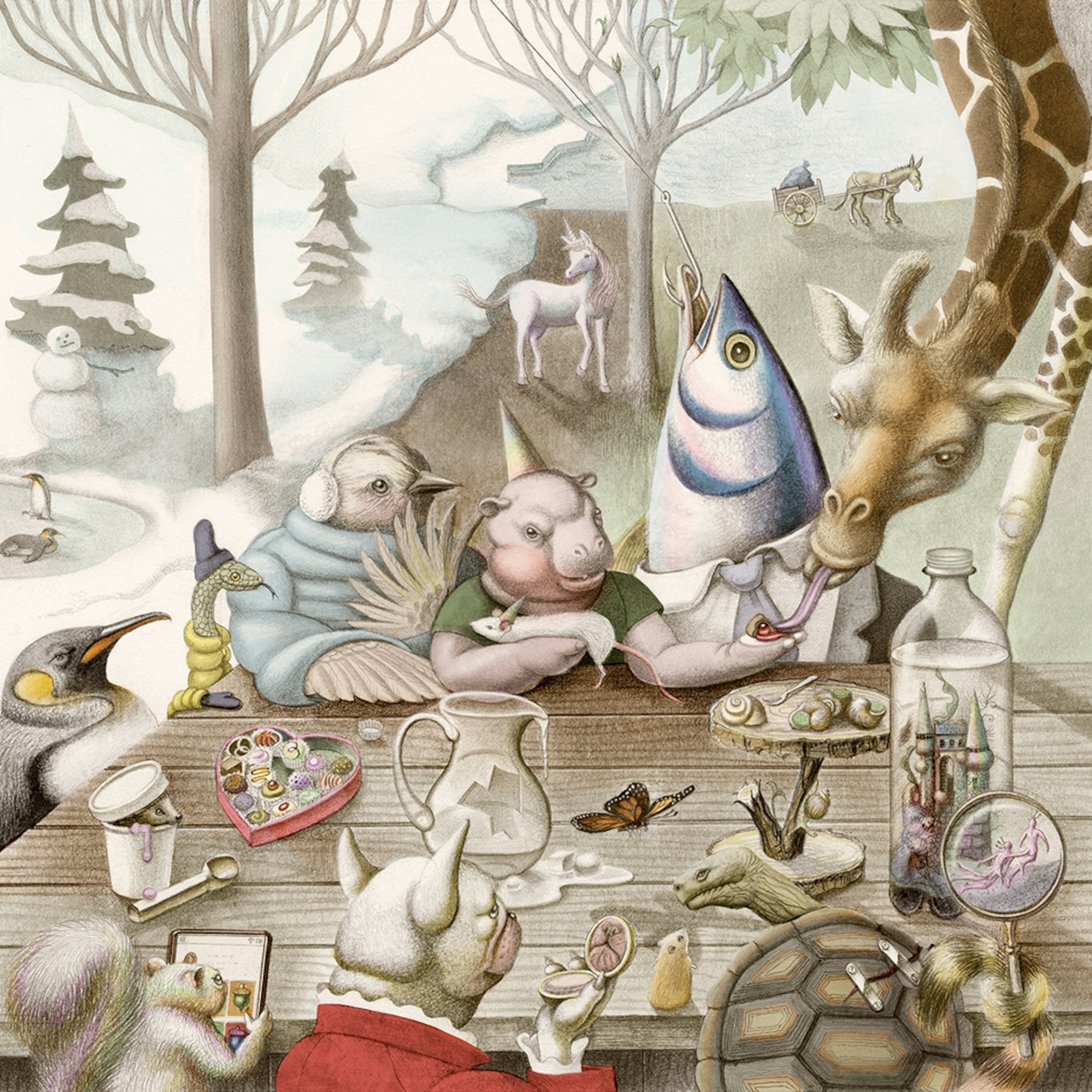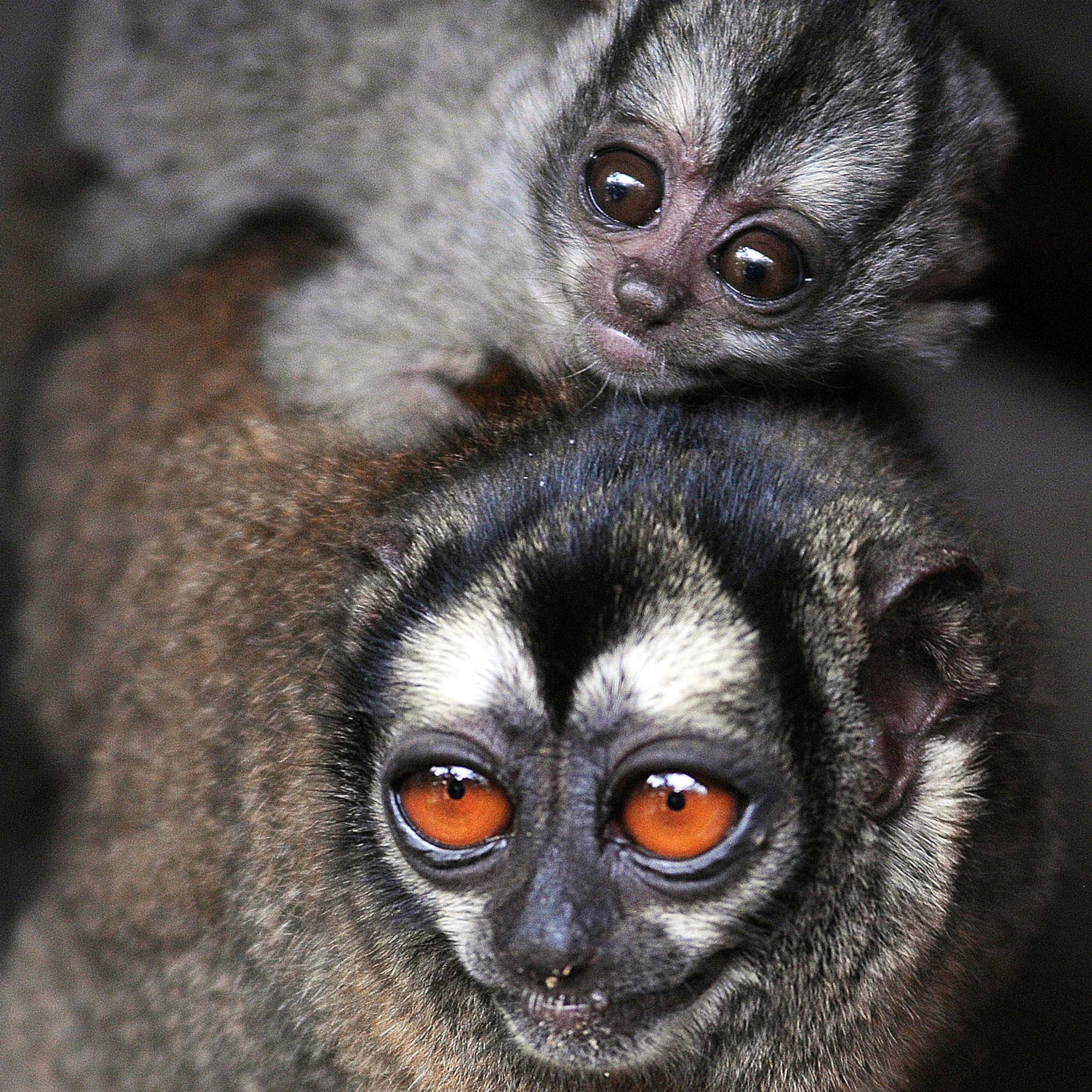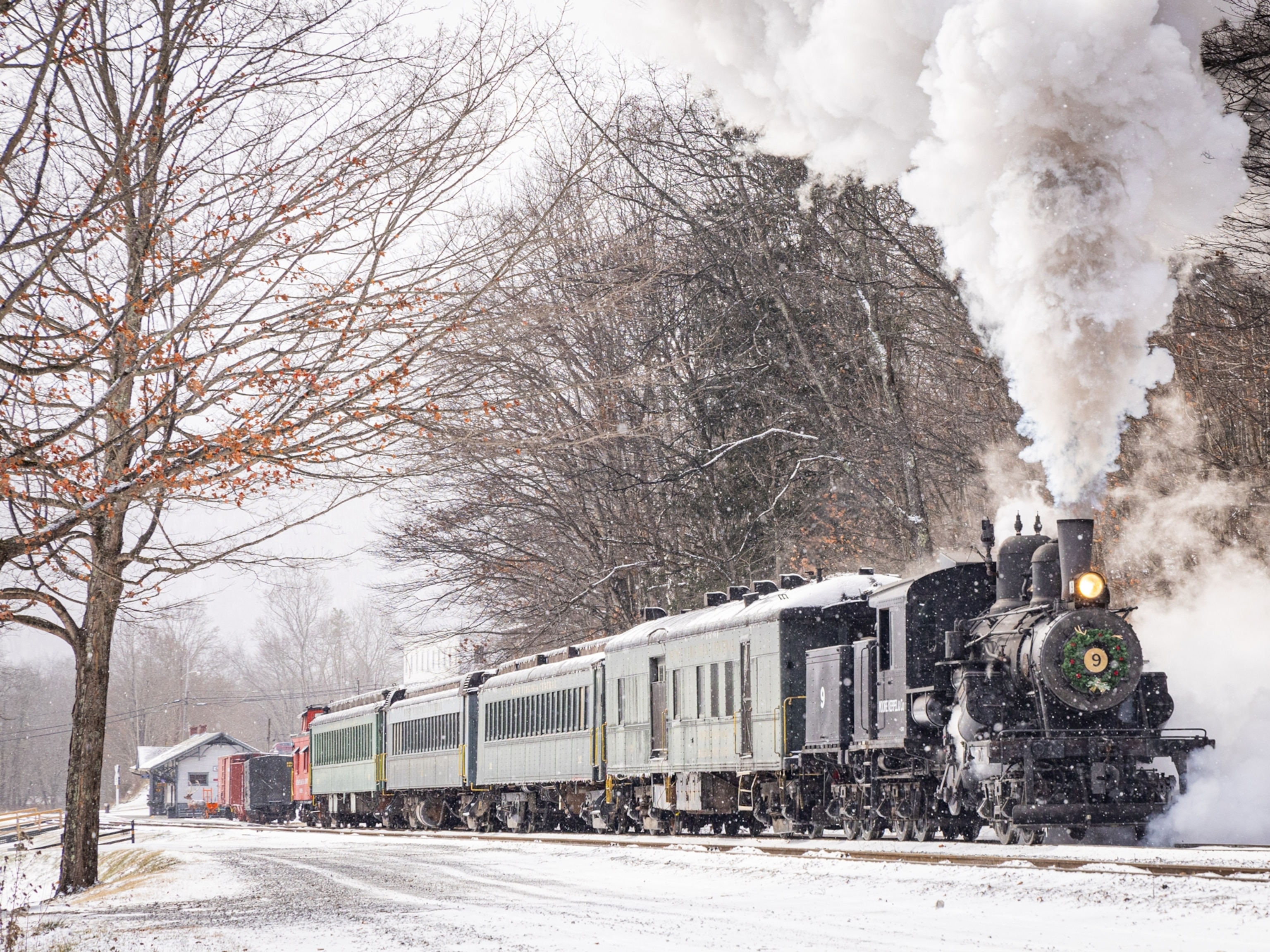With 66.3 million fathers in the United States, neckties may be flying out of the store this week in anticipation of Father's Day. It's a great time to appreciate Dad for years of service—teaching you to drive a stick, helping you buy your first home, or even showing you how to work a Windsor knot on your very own tie. But there are a slew of lesser-known fathers in the animal kingdom with intensive parenting skills of their own.
"The whole point for the parents is to get at least two offspring to survive," said Ed Matheson, an ichthyologist (fish zoologist) at the Florida Marine Research Institute in St. Petersburg. And for some species, the male's the one that helps his young—and the genes they're carrying—safely weather the often dangerous path toward adulthood.
Once the female hip-pocket frog, an Australian species also known as the marsupial frog, lays up to 20 white eggs, her work is done. According to Frank Lemckert, a research scientist for the State Forests of New South Wales, Australia, the female then "heads off to do whatever she wants to do, perhaps finding a mate and laying more eggs" the male gets day care duty.
Over a period of several days, the male frog watches the eggs hatch into tiny tadpoles. Then the male takes a seat right in the middle of the new tadpoles. The tadpoles wriggle along their father's back until they reach two tiny slots that open into the male's hip pouches.
Inside the pouch, the tadpoles live on the yolk leftover from their hatching. They pop out a few weeks later as fully formed frogs.
Other frog species have pouches to carry developing offspring, but the hip-pocket frog is the only one Lemckert knows of in which the male does the lugging.
In the water, sea horse fathers have an even closer relationship with their future offspring. While the closest a human dad gets to pregnancy may be strapping on an "empathy belly," sea horse males carry developing embryos that have an intimate connection with the male's body.
A new sea horse brood begins when the female deposits eggs into a special pouch on the male's abdomen, and the male fertilizes them. Then, developing embryos burrow into honeycomb-like structures within the male's pouch.
"Sea horses are probably the best example of fathers caring for their young in the animal world," said Heather Masonjones, a biologist at the University of Tampa in Florida. The male sea horse, Masonjones said, "develops what looks almost like a placental relationship with the embryos." Within the male's pouch, this connection transports oxygen to the developing sea horses and removes waste.
Dieting Dads
Many human mothers have serious cravings while pregnant, but a hardhead catfish father needs to check his appetite if he wants his young to survive. This species, which swims Atlantic waters from Cape Cod to the Mexico, carries up to 48 marble-size eggs in his mouth—a process known as mouth brooding—for the 60 days it takes for his offspring to develop.
"You'd think it would be hard for them to pass up a meal," Matheson said.
Males in many fish species play an active role in caring for eggs, the University of Tampa's Masonjones said. But for a bird, the emperor penguin has a bit of an alternative lifestyle. In this species, fathers care for and hatch the eggs, while female penguins head out to sea to feed.
The males spend more than two months incubating their eggs during Antarctica's harsh winter, huddling together with other males to conserve heat and energy. To prepare for the task, the male bulks up before the breeding season to 40 kilograms (88 pounds). He'll lose half of this weight during his two-month egg-sitting fast.
"They are animals of extreme limits," said Paul Ponganis, a research physiologist at Scripps Institution of Oceanography in La Jolla, California. Emperor penguins, besides having extensive parenting duties, are the best divers in the bird world, dropping down to 500 meters (1,640 feet). "In addition," Ponganis said, "they are beautiful animals."
Parental Primates
Among mammals, the South American marmoset may win the prize for most-involved dad. The marmoset mother starts pulling away from her twins a few weeks after they're born. Then "the male steps up," said Jeff French, a primatologist at the University of Nebraska in Omaha.
The male carries, feeds, and grooms the infants—with help from their older siblings—and may even act as a midwife during birth, grooming and licking the newborn marmosets.
One reason for the marmoset father's high involvement may be the high cost of birth for the mother, whose twin babies make up 25 percent of her body weight. "It's like a 120-pound (55-kilogram) woman giving birth to a 30-pound (14-kilogram) baby," French said.
"And on top of that, two weeks later, she's pregnant again," French said. Unlike other species—in which nursing can provide a kind of temporary birth control for new moms—marmoset mothers can get pregnant right away.
French has been looking at the relationship of hormones to the marmoset male's parental aptitude.
By analyzing the levels of testosterone in male urine, French said, he's found that after a female conceives, the male's testosterone drops by half. The effort a marmoset father puts into his offspring may also be influenced by his testosterone levels, French says.
While none of these animal fathers likely have a tie to show for their efforts, they may be able to pass along a few sets of genes.








